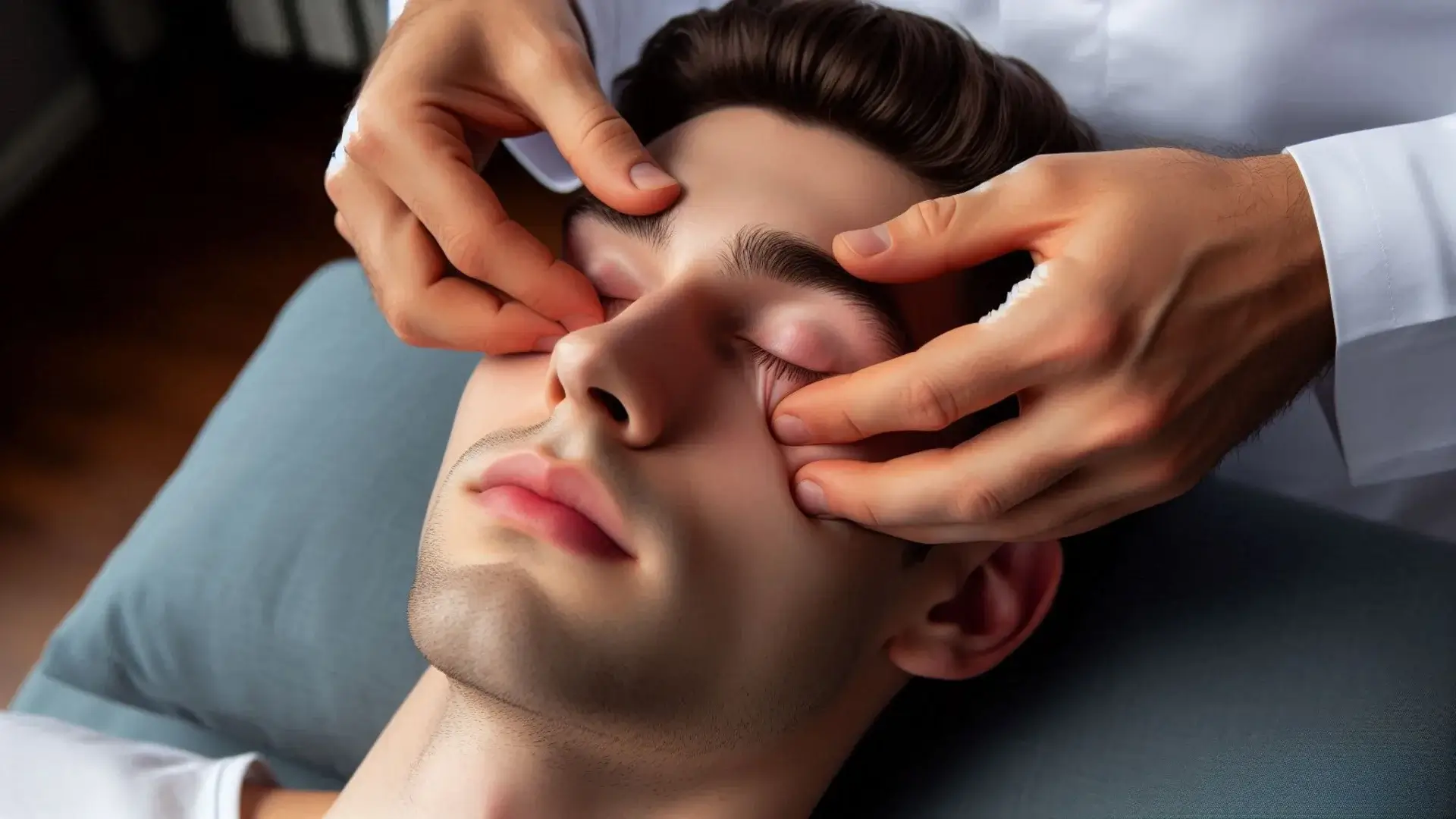
Physiotherapy for Ptosis: Treatment Benefits and Techniques
Imagine struggling with ptosis, a condition where your eyelid droops over your eye, potentially impairing your vision. It’s not just a cosmetic concern; it can significantly affect your daily activities and quality of life. Fortunately, physiotherapy offers innovative solutions to manage and potentially improve this condition. Physiotherapists, specially trained in facial rehabilitation, can help strengthen the muscles around the eye, enhancing both function and appearance.
At Push Pounds, our team of registered physiotherapists, certified athletic therapists, and registered massage therapists are equipped with advanced certifications, such as the Strength and Conditioning Specialist (CSCS) from the National Strength and Conditioning Association. We specialize in a range of musculoskeletal conditions, ensuring personalized care that aligns with your unique health needs. Whether you’re a professional athlete or navigating everyday life, our collaborative approach with top healthcare professionals promises comprehensive care tailored just for you.
Understanding Ptosis and Its Impact on Eye Function
Ptosis, characterized by drooping eyelids, impacts vital aspects of eye function. This condition not only affects appearance but also diminishes vision quality, which can disrupt your daily life.
What Is Ptosis?
Ptosis occurs when the muscles responsible for raising the eyelid, primarily the levator muscle, become weakened or damaged. This issue can be congenital, meaning you’re born with it, or it can develop due to aging, injury, or certain medical conditions like diabetes or stroke. In some cases, ptosis appears as a result of neurological disorders or as a post-surgical side effect. The condition leads to a drooping upper eyelid that may cover all or part of the pupil, potentially obstructing your vision.
How Ptosis Affects Vision and Daily Activities
When your eyelid droops severely, it can reduce your field of vision, particularly in the upper and peripheral fields. This reduction complicates tasks that require sharp vision such as reading, driving, or using digital devices. Moreover, individuals with ptosis often find themselves tilting their heads back or raising their eyebrows frequently in an effort to see better. This constant strain can lead to secondary issues like neck pain or headaches. The visual impairment and physical discomfort associated with ptosis significantly diminish your ability to perform everyday activities efficiently and safely.
The Role of Physiotherapy in Treating Ptosis
Physiotherapy emerges as a critical intervention for ptosis, offering techniques to enhance muscle strength and eyelid function. This treatment focuses not only on improving appearance but also on boosting your daily visual capabilities and comfort.
Fundamentals of Physiotherapy for Eye Disorders
Physiotherapy for eye disorders, including ptosis, targets the muscles around the eyes to promote better control and strength. Trained physiotherapists assess the extent of muscle weakness or dysfunction and devise a personalized treatment plan. Key components include exercises that stimulate the levator muscle which is primarily responsible for lifting the eyelid. Therapists use a range of modalities such as electrical stimulation and manual therapy to improve neuromuscular function and facilitate recovery.
Specific Physiotherapy Techniques for Ptosis
For patients with ptosis, several specific techniques prove especially beneficial:
- Muscle Strengthening Exercises: These exercises focus on enhancing the strength of the levator and surrounding muscles to improve eyelid lift.
- Manual Lid Lifts: The therapist manually lifts the eyelid, training the muscles and nerves to increase their functional capacity.
- Electrical Stimulation: Small, controlled electric currents stimulate the muscles, increasing their responsiveness and strength over time.
Each technique aims to maximize eyelid functionality and minimize the daily inconvenience and discomfort associated with ptosis. The choice of technique depends on the severity of the ptosis and individual patient needs, ensuring a tailored approach to recovery and functionality improvement.

Benefits of Physiotherapy for Ptosis Patients
Physiotherapy offers significant benefits to individuals suffering from ptosis, focusing on improvements in muscular function and daily living. These advantages stem directly from targeted treatments that enhance eyelid muscle performance and visual functionality.
Improvements in Lid Function and Vision
Physiotherapy for ptosis primarily enhances eyelid function by strengthening the levator muscle, responsible for lifting the eyelid. Consistent treatment leads to better control and increased muscle strength, which directly improves your ability to open and close your eyelid fully. This muscle strengthening aids not only in achieving a more symmetrical eyelid appearance but also ensures that vision is less obstructed. Techniques such as manual lid lifts and specific exercises tailored to your condition promote muscle memory and functionality. If electrical stimulation is part of your treatment, it helps in muscle activation and endurance, which can significantly speed up the muscle strengthening process, providing you with quicker improvements in eyelid function.
Enhanced Quality of Life and Independence
As your eyelid function improves, you’ll likely experience a notable increase in the quality of your daily life. Better vision and eyelid control reduce the risks associated with obstructed sight, such as tripping or falling, and diminish the need for compensatory head tilting or other awkward postures that might lead to neck or back pain. Enhanced eyelid functionality allows you to perform tasks that require sharp visual focus, like reading or driving, with greater ease. Independence in daily activities can boost your confidence and psychological well-being. Physiotherapy, therefore, does not just restore physical capabilities but also contributes profoundly to emotional and psychological health, fostering a more active and autonomous lifestyle.
Alternative and Supportive Treatments for Ptosis
Exploring physiotherapy as a treatment for ptosis opens up a pathway to enhanced eye functionality and a better quality of life. By engaging in targeted exercises and therapies you’re not only working towards rectifying the physical aspects of ptosis but also boosting your confidence and independence in daily activities. Remember that consistent practice and following professional advice are key to seeing improvement in eyelid symmetry and strength. Embrace these therapies as part of your routine and you might find significant relief from the challenges posed by ptosis.

